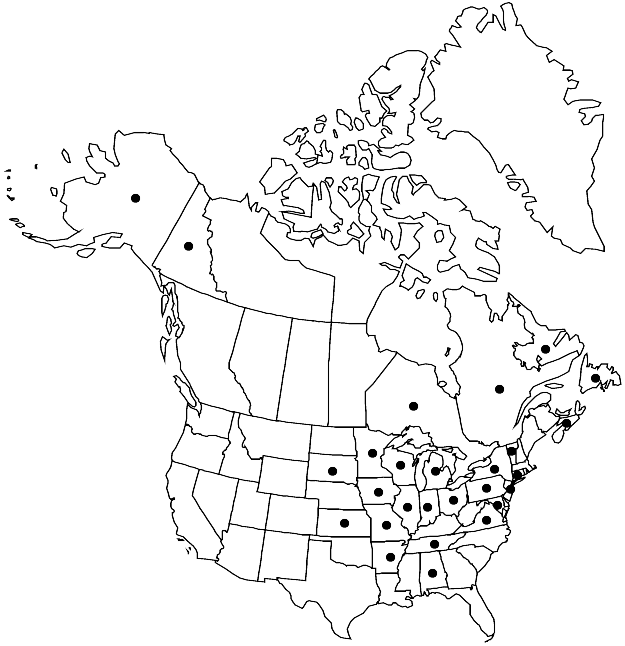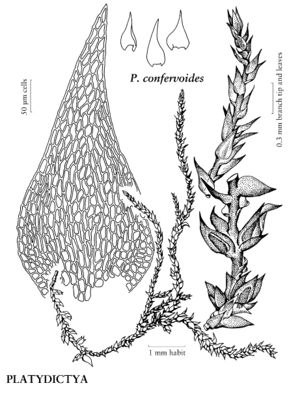Platydictya confervoides
Michigan Bot. 3: 60. 1964.
Plants dense, rigid, dark green to yellowbrown. Stems with branching angle wide, branches firmly attached; pseudoparaphyllia foliose; rhizoids below or at abaxial leaf insertion, redbrown, smooth. Leaves erect-spreading, 0.1–0.3 mm; base not much narrowed to insertion; margins entire or nearly so; alar cells subquadrate, region of 3–6+ cells; distal laminal cells oblong-rhombic, 2–3 (–4):1. Specialized asexual reproduction absent. Sexual condition autoicous; perichaetial leaf margins entire or obscurely serrulate distally. Seta 0.6–0.8 cm. Capsule inclined to horizontal or rarely suberect, shortly oblong-cylindric, asymmetric, 0.8–1.2 mm, contracted below mouth when dry, neck short; stomata at base of capsule; annulus 2-seriate; operculum convex-conic, stoutly apiculate; exostome teeth yellowbrown; endostome cilia in groups of 2 or 3, well developed. Spores 11–13 µm.
Habitat: Moist, shaded limestone rock, stream valleys
Elevation: low to moderate elevations
Distribution

Nfld. and Labr., N.S., Ont., Que., Yukon, Ala., Alaska, Ark., Conn., Ill., Ind., Iowa, Kans., Md., Mich., Minn., Mo., N.J., N.Y., Ohio, Pa., S.Dak., Tenn., Vt., Va., Wis., Europe, w Asia
Discussion
Diagnostic features of Platydictya confervoides include entire or obscurely serrulate leaf margins and short laminal cells, as well as a rupestral habitat.
Selected References
None.
Lower Taxa
"narrower" is not a number.
